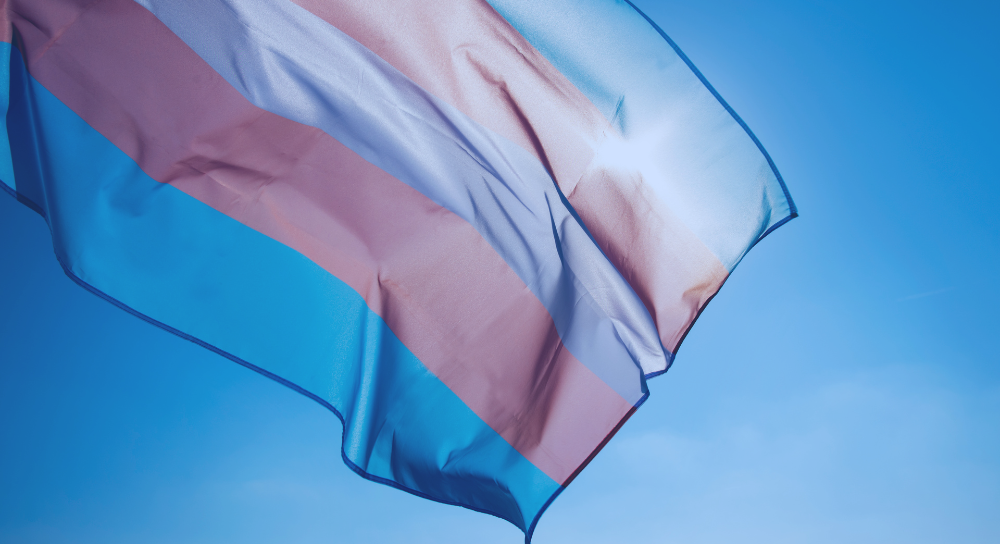
Trans Day of Remembrance and UK Policy
November 20th marks the annual Transgender Day of Remembrance, a day founded over 20 years ago to memorialise trans lives lost due to transphobia, and to bring attention to the violence that the community faces globally.
It was in 1998, after the murder of Rita Hester, that trans activist Gwendolyn Ann Smith started the movement, but even though her death started a legacy, Hester’s murderer remains at large to this day.
24 years on and it seems that transgender rights are going backward. According to 2022 Home Office Statistics in the UK, incidents of transgender hate crime have increased by 56% from last year.
At the beginning of this year, the Parliamentary Assembly of the Council of Europe identified the UK as a country of concern in the wake of ‘extensive and often virulent attacks on the rights of LGBT+ people,’ along with Russia and Poland.
I remember taking the train to work one morning during the Conservative leadership race and seeing an article headline stating that one of the contenders had their first major setback in the race. The reason? They supported transgender rights.
Imagine that – someone supporting your existence being a disadvantage in the race to lead the Party that controls the country you live in. Just days into her leadership as the new PM, Liz Truss made it her mission to stop Nicola Sturgeon from passing a bill that would have made it easier for Transgender people to self-identify, because that was clearly a priority, unlike the cost-of-living crisis.
Weeks have passed and our second new Prime Minister, Rishi Sunak, is not much better, a defender of banning trans women in sports and pledging to ‘protect women’s rights against gender-neutral language.’ In the leadership campaign, the trans community are not hopeful for any meaningful support any time soon.
Many members of the recent cabinets don’t have stellar voting records when it comes to the support of the LGBTQ+ community. Some of the highlights include one member arguing that teachers shouldn’t support trans students, and another openly attending anti-trans alliance meetings and supporting anti-trans public figures. To put it lightly, I can’t say I feel very safe right now.
Unfortunately, not feeling safe is an all-too-common feeling in the UK transgender community at the moment. The feeling that our rights could be taken away at any second and the anxiety of having people in power disagreeing with your existence is normalising a harmful mindset as acceptable discourse.
For me, the knowledge that hate crimes are on the rise in the UK is always in the back of my mind. Whether it is buying clothes, going to the gym, using the bathroom, or simply getting on the train in the morning, there is always the worry that someone is going to take offense to my presence.
The Origins of UK Transphobia and Being Trans in the Workplace
The UK has been dubbed TERF* island in recent years, and an increase in the discourse surrounding trans people in both a political and personal sphere can be seen by anyone with an internet connection.
This conversation has been co-opted by a cisgender, middle-aged, white majority, most of whom have never even spoken with a trans person and all of whom have no understanding of the trans experience.
The pervasive goal here is to delegitimatize the trans identity, and the implication is that trans women especially are sexual predators trying to invade women’s spaces. They hide their ignorance and hate under a thinly veiled excuse of feminism, citing anecdotal ‘evidence’ of assaults with an impressive lack of statistical facts or proof.
This small but powerful group leaves a very vulnerable minority without a safe space, a minority that was the victim of 4,355 hate crimes in 2021, and those fighting against transgender rights only growing in number.
These views have been further legitimised by the fact that these so-called TERFS often hold academic positions and are praised as intellectuals. In my own university town in Brighton, a University of Sussex Philosophy Lecturer, Kathleen Stock, produced anti-trans academic work for several years until 2021 after mass student protests. She weaponised philosophical theories to back-up her hate speech, describing life-saving gender change laws as a legal fiction, a ‘useful untruth’.
More prominently, JK Rowling, the beloved children's author of the Harry Potter novels, has taken to Twitter to defend this point of view, before publishing a 3,690-word essay aptly named ‘Terf Wars’. Her insidious ramblings include self-created statistics surrounding gender dysphoria, and the overused ‘trans women are predators’ trope, all while claiming that any criticism of her point of view is undoubtedly misogyny.
This grossly false information has been so damaging to the trans community in many ways and is not dissimilar to that which happened to the gay community during the AIDS crisis and pre-Stonewall*.
In times like these, it is so incredibly important to create a diverse and inclusive space at work in which trans people can be their authentic selves without fear. The way to do this is simple – with respect. If you do the below, you’re well on your way to making the workplace a slightly easier place for your transgender colleagues.
1. Respect pronoun usage and names - this is the easiest way to show someone who is trans that you are accepting or at the least respectful of their identity.
2. Don’t ask someone's dead name*. I understand when meeting a trans person, you may be curious to know their name before they transitioned. However, this is an invasive question and doesn’t portray empathy for the feelings of discomfort a trans person may have for their previous name and the difficulties that come with this.
3. In turn, if you know a trans person's dead name, it's best to keep it to yourself. It isn’t your place to tell someone that information without permission from your colleague.
Being Transgender is not easy, the feeling of looking in the mirror and seeing someone of a completely different gender is indescribable to someone who hasn’t been through it. It can affect every part of your life - from your social life, and your love life, to your work life.
You are constantly second-guessing yourself and wondering if you are “trans enough.” The waiting list to get seen and treated can be five years on the NHS, and you do everything you can to be seen as the correct gender, even putting your safety at risk.
Navigating life as a transgender individual can be so hard even without hate crimes and transphobic governments. To any transgender person reading this article know this:
You are not alone
*TERF: Trans exclusionary radical feminist - an advocate of radical feminism who believes that transgender identities are not legitimate and who is hostile to the inclusion of trans people and gender-diverse people in the feminist movement.
*The Stonewall riots, June 1969 - Patrons to the illegal gay bar in the Greenwich Village, New York fought back against police after a raid upon the bar. The following year on the same date, Pride as we know it was born.
*Deadname - a deadname is a colloquial term in the trans community for a trans person's birthname, their name before their transition.

